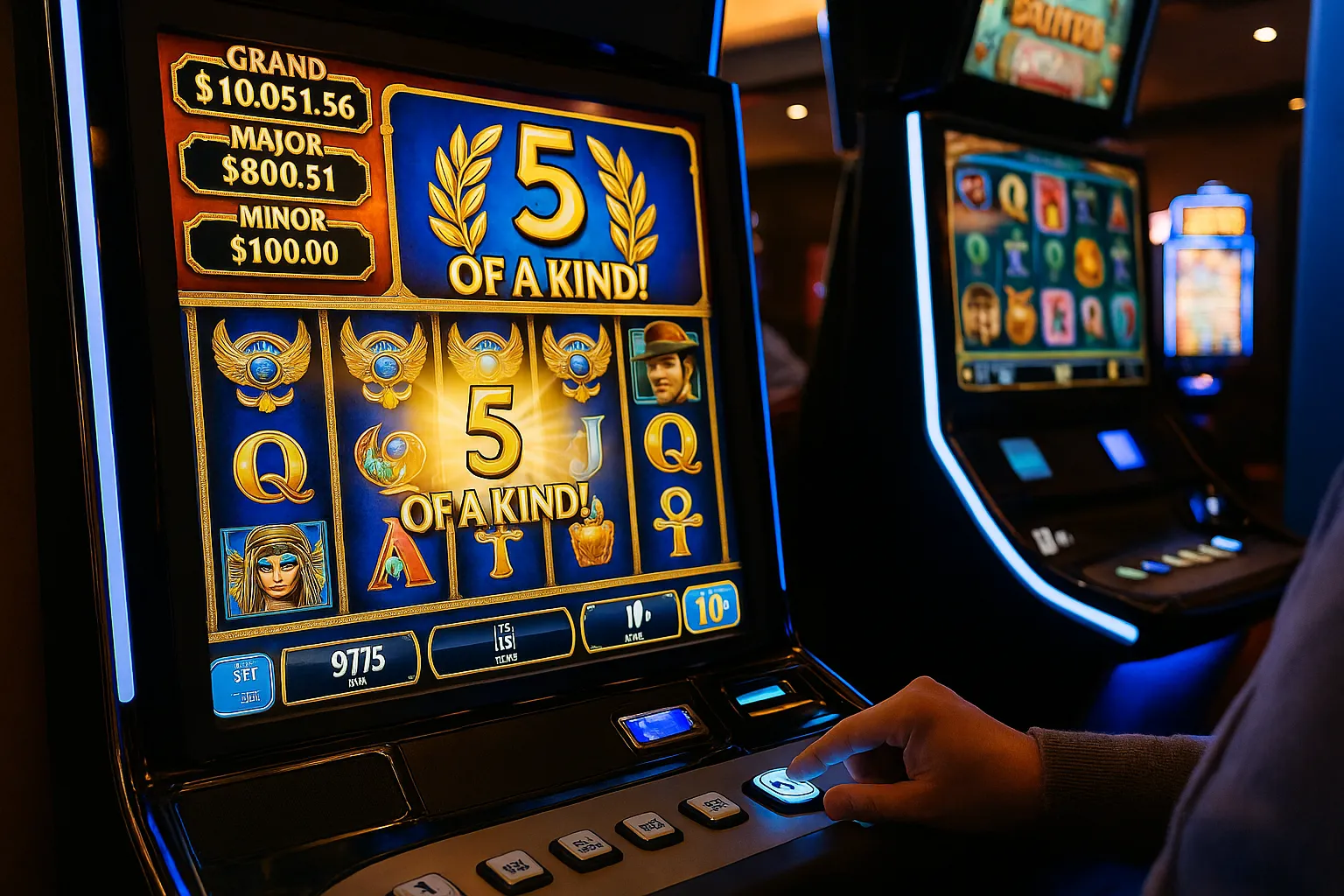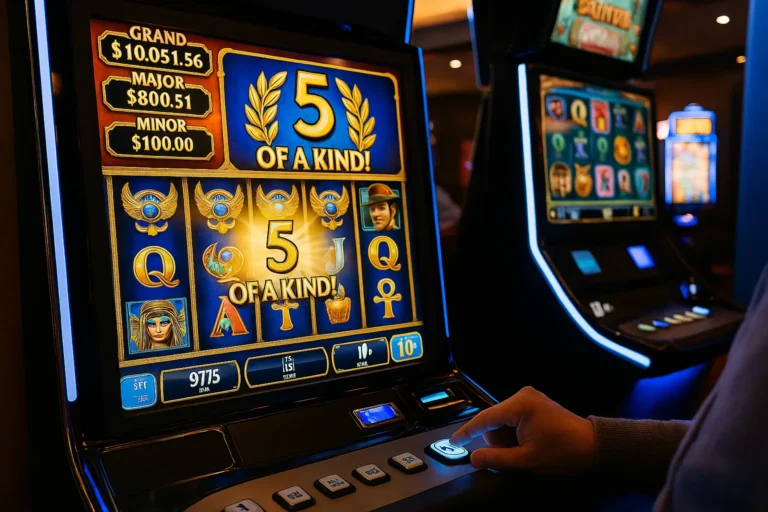Slot machines have come a long way from their mechanical origins to today’s digital marvels with immersive themes, massive jackpots, and evolving mechanics. If you’re someone who enjoys spinning the reels—whether casually or seriously—understanding the difference between low risk and high risk slots can drastically improve your experience, your strategy, and even your bankroll management.
But what exactly makes a slot high risk or low risk? It’s a question I’ve asked myself time and again, especially when exploring the ever-growing world of new betting sites 2025, many of which introduce fresh game providers and previously unseen slot designs. To answer this, let’s dig into what volatility really means in the context of slot machines, how risk levels affect gameplay, and what factors you should consider when choosing a slot game in the modern iGaming landscape.
The Concept of Slot Volatility
At the core of understanding risk levels in slots is a key term: volatility, also known as variance. This refers to how often and how much a slot pays out. It’s not about whether the game is fair (modern licensed slots are designed to be provably fair), but rather how the payouts are distributed over time.
Low volatility slots offer smaller wins at more frequent intervals. They’re ideal for players who want longer sessions without risking their bankroll too quickly. These are the types of games you can settle into, spin for hours, and enjoy regular rewards, even if they’re modest.
On the other end, high volatility slots are more extreme. They may spin through dozens of rounds with little or no return—until, suddenly, they hit a massive win. These slots are often packed with bonus features and huge jackpot potential, but they’re not for the faint of heart.
If you’re new to slots and you land on a game that drains your balance quickly without many wins, it’s probably high risk. Conversely, if you find a slot that pays out consistently but in smaller amounts, you’re likely playing a low risk game.
Gameplay Mechanics that Influence Risk
Let’s take a deeper look at what elements in a slot game define its risk level:
1. Payline Structure and Symbol Payouts
Low risk slots often have simpler mechanics—fewer paylines, more predictable outcomes, and smaller multipliers. In contrast, high risk slots may include megaways, dynamic reels, cascading wins, or expanding wilds. These can contribute to big wins, but they also reduce the frequency of smaller, regular wins.
2. Bonus Features
High volatility games usually include exciting features like free spins, multipliers, sticky wilds, or gamble functions. These features often lead to large payouts—but they’re usually hard to trigger. Low risk slots may also include bonus features, but they tend to be more accessible and less lucrative.
3. RTP Isn’t Everything
Return to Player (RTP) percentage is often displayed alongside slot games, and while it tells you the theoretical payout over the long term (usually between 94% to 98%), it doesn’t necessarily tell you how that money is distributed. A slot with 97% RTP could still be high volatility, returning that money in rare but huge wins.
Who Should Play Low or High Risk Slots?
From personal experience, your choice depends not only on your bankroll but also your temperament. If you’re someone who prefers a steady game and doesn’t want the emotional rollercoaster of long dry spells, low risk slots are more your style. You’ll enjoy watching your bankroll last longer, even if you’re not hitting huge wins.
On the other hand, high risk slots are for thrill-seekers. You need patience, a higher bankroll, and a tolerance for variance. These games can be frustrating at times, but when they pay off, the adrenaline rush is hard to beat.
This is especially relevant when testing games on new betting sites 2025, which often showcase innovative slots from up-and-coming developers. These sites usually feature demo modes, allowing you to try games risk-free and judge their volatility before playing with real money.
How New Betting Sites in 2025 Handle Slot Risk
One of the most exciting trends in new betting sites 2025 is the level of transparency and data they provide for each slot game. I’ve seen platforms now clearly label games by volatility, list RTP percentages upfront, and even provide win distribution graphs. This is a significant leap from previous years when players had to guess based on personal trial and error.
Moreover, these newer platforms are embracing AI-driven personalization. That means your game recommendations may soon be based on your risk tolerance, previous play style, and budget. For example, if you consistently play low volatility slots, you’ll be more likely to see similar games highlighted on your dashboard. It’s like having a casino concierge who knows exactly what kind of thrill you’re after.
Tips for Choosing the Right Slot for You
When I first started exploring online slots, I didn’t know the difference between a Starburst and a Dead or Alive II in terms of risk. Over time, with testing, reading game reviews, and burning through more demo spins than I can count, I developed a feel for what works for me—and what doesn’t.
Here’s what I recommend when approaching a new slot game, especially on new betting sites 2025:
-
Start in demo mode. Most platforms let you spin for free. Use this to your advantage.
-
Read the paytable and rules. It will often tell you about volatility, feature frequency, and max wins.
-
Track your results. Play 100 demo spins and see how often you win and what the average payout is.
-
Check player reviews. Other players will usually flag high or low risk behavior.
-
Be honest about your risk tolerance. Don’t play high volatility games if they stress you out or burn your balance too quickly.
Real World Example: Comparing Two Popular Slots
Let’s use a real-world comparison between two well-known games to highlight the risk difference.
Starburst by NetEnt is a classic example of a low volatility slot. It features expanding wilds and frequent payouts, though none of them are massive. It’s perfect for beginners or players who enjoy longer sessions without major swings.
Dead or Alive II, also by NetEnt, is at the opposite end of the spectrum. It’s infamous for its high volatility. Free spins can pay out thousands of times your stake—but they rarely show up. You might spin through your budget chasing a feature that only triggers once in 300 spins.
When trying these games on new betting sites 2025, you’ll often see them categorized or even tagged by risk level. This makes your choice easier and your gaming experience more tailored.
Final Thoughts
So, what defines a slot as low or high risk? It all boils down to volatility—how often and how big you win. Low risk slots are gentle and reliable; high risk slots are wild and potentially very rewarding. Neither is objectively better—it’s about what kind of experience you’re looking for.
With new betting sites 2025 leading the way in transparency, personalization, and innovation, players are now more empowered than ever to find games that suit their style. Whether you’re in it for the slow burn or the all-in chase, there’s a slot out there with your name on it.
Just remember: no matter the volatility, always play responsibly. Set a budget, know when to walk away, and above all—enjoy the spin.
Let me know if you’d like to tailor this for a specific website or niche audience, or need a visual preview section added.







